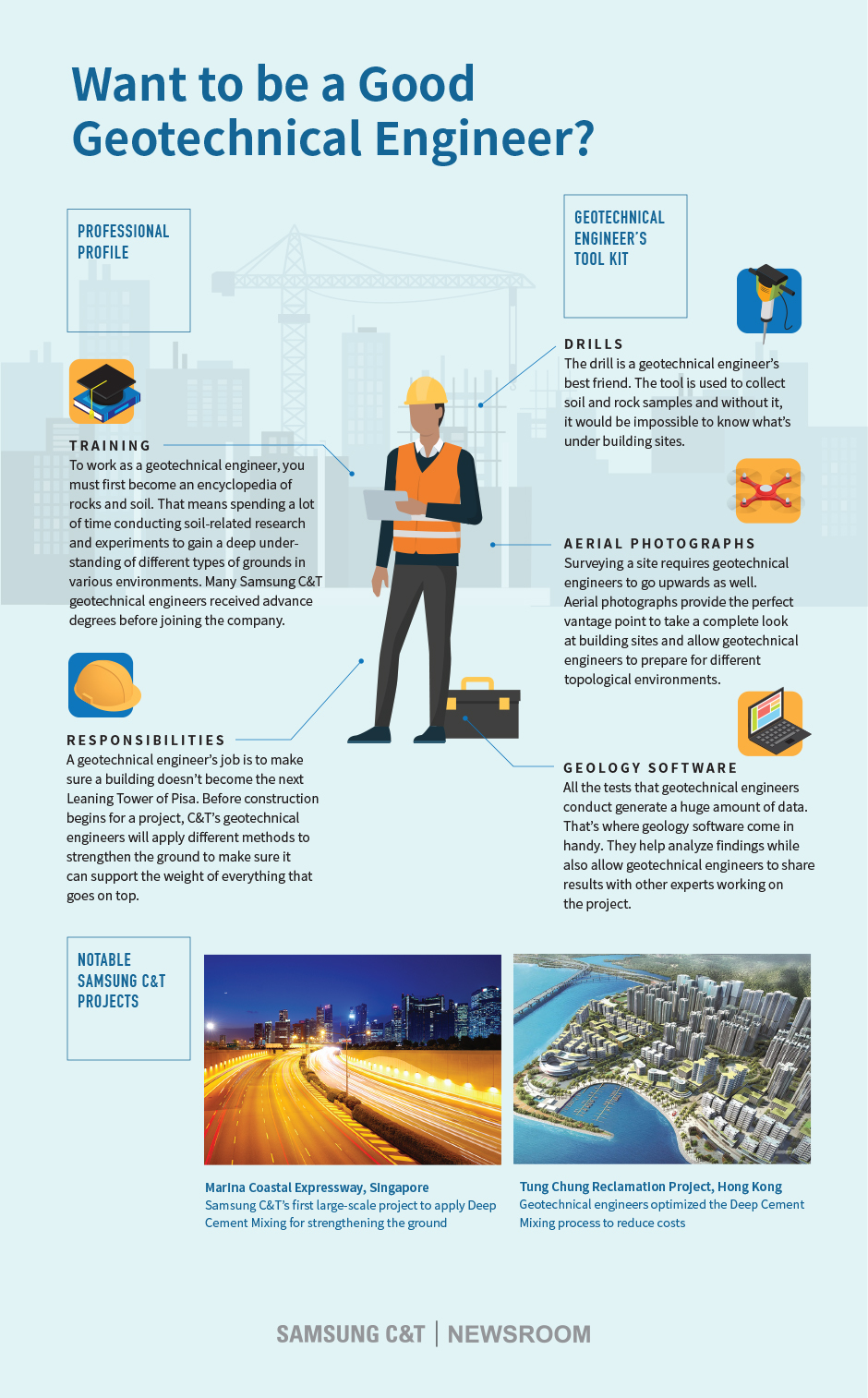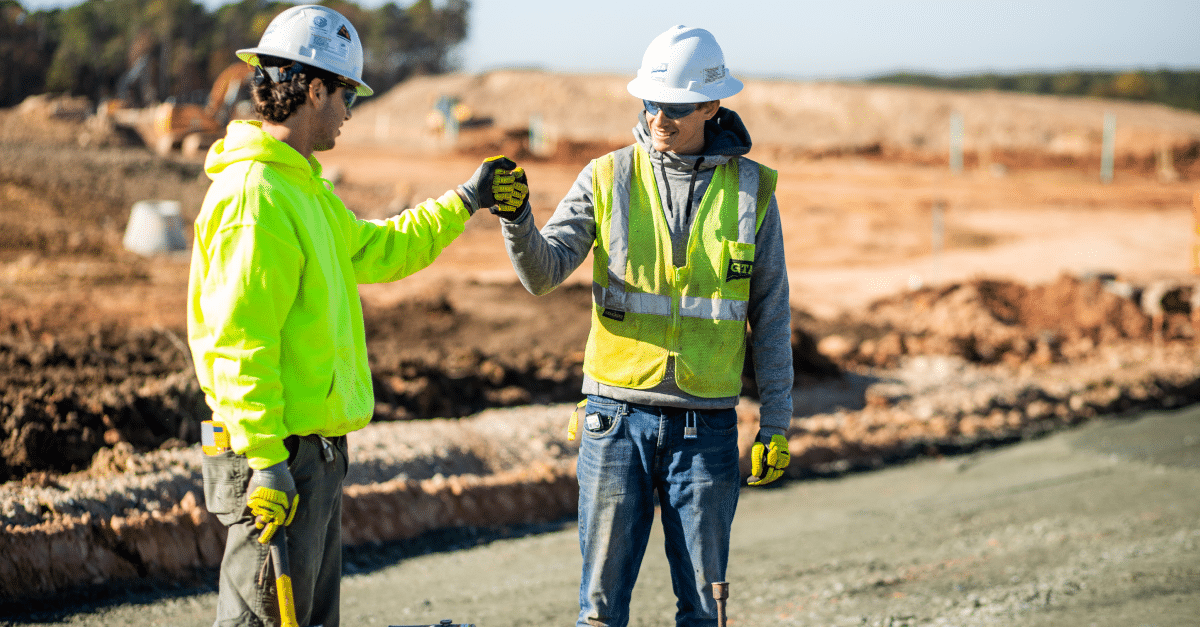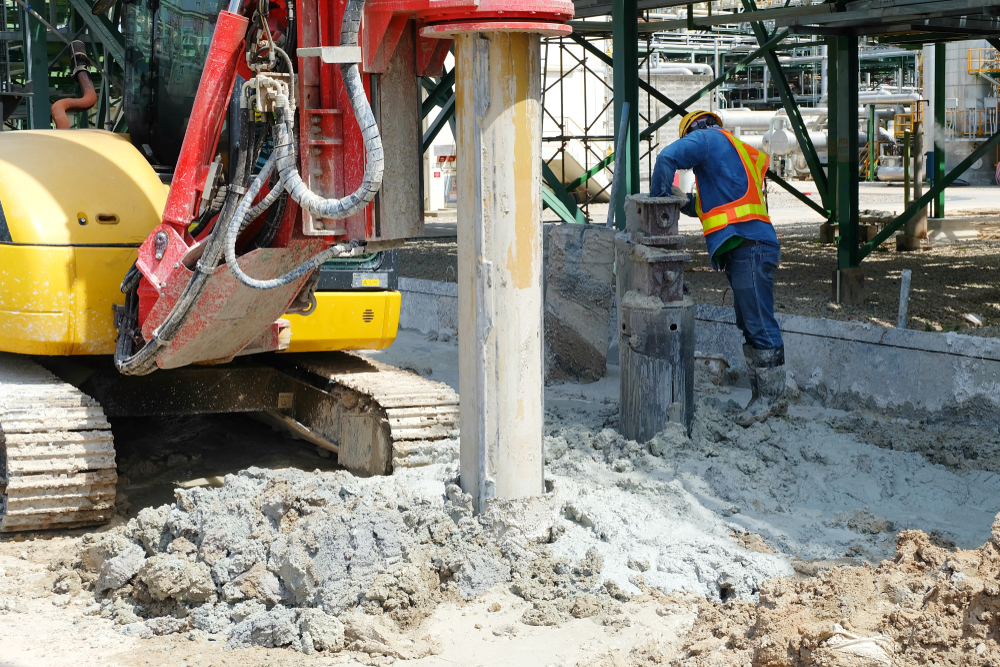The smart Trick of Geotechnical Engineering For Construction Projects That Nobody is Talking About
Table of ContentsNot known Incorrect Statements About Geotechnical Engineering For Construction Projects How Geotechnical Engineering For Construction Projects can Save You Time, Stress, and Money.All About Geotechnical Engineering For Construction ProjectsWhat Does Geotechnical Engineering For Construction Projects Mean?Geotechnical Engineering For Construction Projects for BeginnersGeotechnical Engineering For Construction Projects Things To Know Before You Get ThisThe Geotechnical Engineering For Construction Projects Statements
and Kovacs, W. (1981 ), An Introduction to Geotechnical Engineering, Prentice-Hall, Inc. Deep Check Tech (2023 ): Deep Scan Technology reveals concealed structures at the site of Denmark's highest building. "Geofrost Coring". GEOFROST. Retrieved 20 November 2020. Han, Jie (2015 ). Concepts and Method of Ground Improvement. Wiley. ISBN 9781118421307. RAJU, V. R.Ground Improvement Technologies and Situation Histories. Singapore: Study Publishing Providers. p. 809. ISBN978-981-08-3124-0. Ground Renovation Principles And Applications In Asia. Pariseau, William G. (2011 ). Layout analysis in rock technicians. CRC Press. Hegde, A.M. and Palsule P (Geotechnical Engineering for Construction Projects).S. (2020 ), Efficiency of Geosynthetics Reinforced Subgrade Subjected to Repeated Lorry Loads: Speculative and Numerical Researches.
Cengage Understanding, Stamford, 666 p. Atkinson, J., 2007. The mechanics of soils and structures. Taylor & Francis, N.Y., 442 p. Floating Offshore Wind Generators: Feedbacks in a Sea state Pareto Ideal Layouts and Economic Evaluation, P. Sclavounos et al., October 2007. Nicholson, D, Tse, C and Penny, C. (1999 ). The Observational Technique in ground engineering principles and applications.
Geotechnical Engineering For Construction Projects Can Be Fun For Anyone
Lab and area testing plays a critical duty in this process. By extracting samples from the earth's subsurface and applying a collection of examinations, geotechnical designers can forecast the behavior of dirt layers and review their suitability for different construction endeavours. The significance of geotechnical engineering in civil engineering can not be overemphasized, attributable to numerous variables: The first step in any kind of geotechnical study involves establishing the dirt kind at the building website.
Understanding these attributes makes certain that only ideal soil kinds are picked for the development, thus avoiding possible structural failures. The foundation serves as the bedrock of any construction task. Selecting the appropriate structure kind is a choice that rests on the comprehensive evaluation offered by geotechnical engineering. This ensures the long life and stability of frameworks by fitting the tons they will certainly birth.

Geotechnical site examination is a critical action in the planning and execution of any kind of building task. It involves the collection and analysis of data connected to the physical residential properties of dirt and rock under a proposed building site. This information is important for the style and building and construction of safe, steady, and sustainable structures.
The 10-Second Trick For Geotechnical Engineering For Construction Projects
In this blog site, we will certainly look into the importance of geotechnical website investigation, its numerous parts, and exactly how it benefits building projects. Geotechnical site investigation, also referred to as subsurface exploration, includes a series of activities aimed at identifying the dirt, rock, and groundwater problems at a building and construction site. The primary goals are to recognize possible geotechnical hazards, evaluate the design buildings of subsurface materials, and give referrals for the layout and construction of foundations, keeping walls, and various other frameworks.
This might include geological maps, airborne pictures, previous examination records, and historical data. The workdesk research aids in recognizing possible geotechnical problems and intending the succeeding fieldwork. Adhering to the desk research study, a website reconnaissance is conducted to visually inspect the website and its surroundings. This entails observing the topography, drainage patterns, existing structures, plant life, and any go to this web-site kind of signs of instability or erosion.
Not known Incorrect Statements About Geotechnical Engineering For Construction Projects
Superficial examination pits are dug deep into to directly observe and sample the dirt and rock. This approach works for examining the upper layers of the subsurface and identifying near-surface threats. Non-invasive geophysical methods, such as seismic refraction, ground-penetrating radar (GPR), and electric resistivity tomography (ERT), are made use of to map subsurface conditions and spot abnormalities.
Dirt and rock examples collected throughout the field investigation undergo research laboratory screening to identify their physical and mechanical buildings. Typical research laboratory examinations include grain dimension evaluation, Atterberg limits, compaction examinations, triaxial shear tests, and loan consolidation tests. These tests give crucial data for geotechnical evaluation and style. The data collected from the workdesk research, site reconnaissance, area investigation, and laboratory screening are evaluated and analyzed to establish an extensive understanding of the subsurface conditions.
The key benefit of geotechnical site investigation is ensuring the security and security of structures. By comprehending the subsurface problems, engineers can develop foundations and other structural aspects that can endure the tons and environmental pressures they will certainly go through. This reduces the threat of settlement, decrease, and architectural failing.
Top Guidelines Of Geotechnical Engineering For Construction Projects
This ensures reliable and risk-free building techniques. Geotechnical site investigations are typically called for by constructing codes and regulations.
This info is very useful for project supervisors, architects, and contractors in establishing reasonable schedules, budgets, and contingency strategies. Geotechnical Engineering for Construction Projects. Skyscraper in a Coastal AreaIn a seaside city, a skyscraper domestic structure was planned on a website with believed loosened sand down payments and a high water table. An in-depth geotechnical examination, including borehole boring, CPT, and geophysical surveys, was performed
The 6-Minute Rule for Geotechnical Engineering For Construction Projects
Based on these findings, the foundation design was changed to consist of deep pile structures extending right into stable strata, and ground renovation strategies, such as vibro-compaction, were executed to mitigate liquefaction dangers. This aggressive method guaranteed the security and security of the building while preventing pricey post-construction removal. Framework Growth on a Sloping TerrainA significant framework task, involving the construction of a freeway and bridges, was planned on a hilly surface with high inclines.

The Leaning Tower of Pisa (Italy), a famous building wonder, is infamous for its unintentional tilt from considerable geotechnical issues. The tower's foundation was improperly designed to take care of the soft, unpredictable soil below it, bring about uneven settlement and its unique lean. Our world is dotted with excellent infrastructure projectsfrom looming high-rises to stretching bridgesall standing testament to the straight from the source evolution of the different building devices and approaches readily available.
Geotechnical engineering is a specialized area within civil engineering that concentrates on studying the actions of earth products. This branch delves deep right into the groundinvestigating exactly how the dirt, rock, and groundwater at a building and construction site can influenceand be influenced bythe infrastructure that we put up on and into them. Prior to a single block is laid or a concrete structure poured, geotechnical designers probe into the earthgathering important data concerning the website's dirt make-up, rock structure, and groundwater degrees.
The Facts About Geotechnical Engineering For Construction Projects Uncovered

is a device made use of to examine the stability and load-bearing capacity of stacks throughout installation, leveraging the concept of wave proliferation. It maximizes construction performance by supplying real-time evaluations, therefore making certain safe and effective stack foundations. Among the sensible applications of geotechnical engineering involves determining and performing the ideal techniques for structure construction.
Pile driving stands for more than the mere act of putting structural components into the ground. On the contrary, it is a meticulously orchestrated procedure of transferring a framework's lots past the much less stable dirt layers closer to the surfacedown to the much more considerable strata that lie below. In the situation of stack driving, consider exactly how geotechnical designers adeptly utilize this strategy to equally disperse the framework's weight.